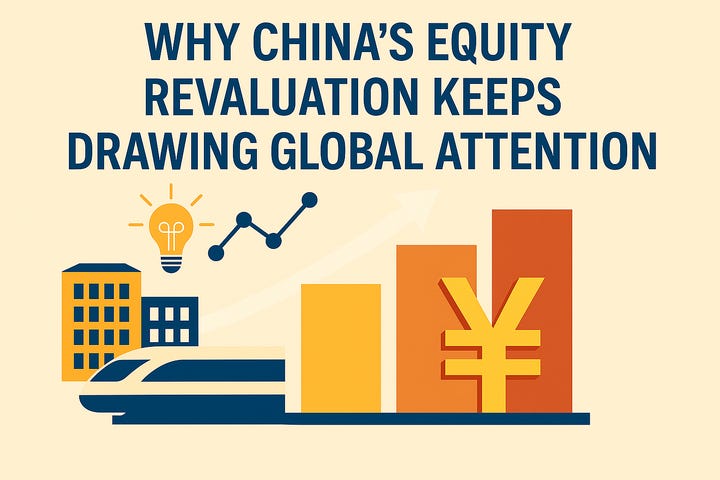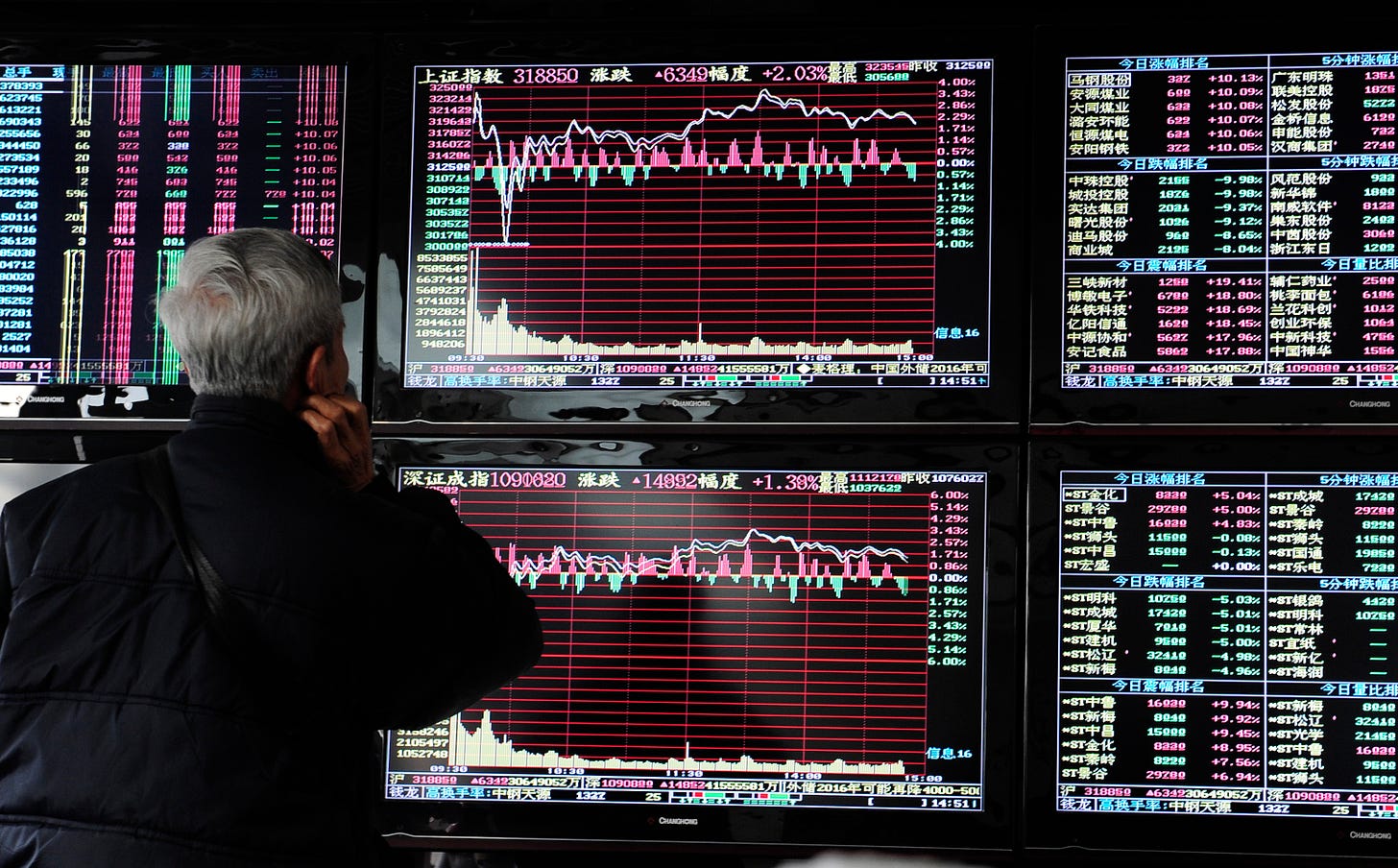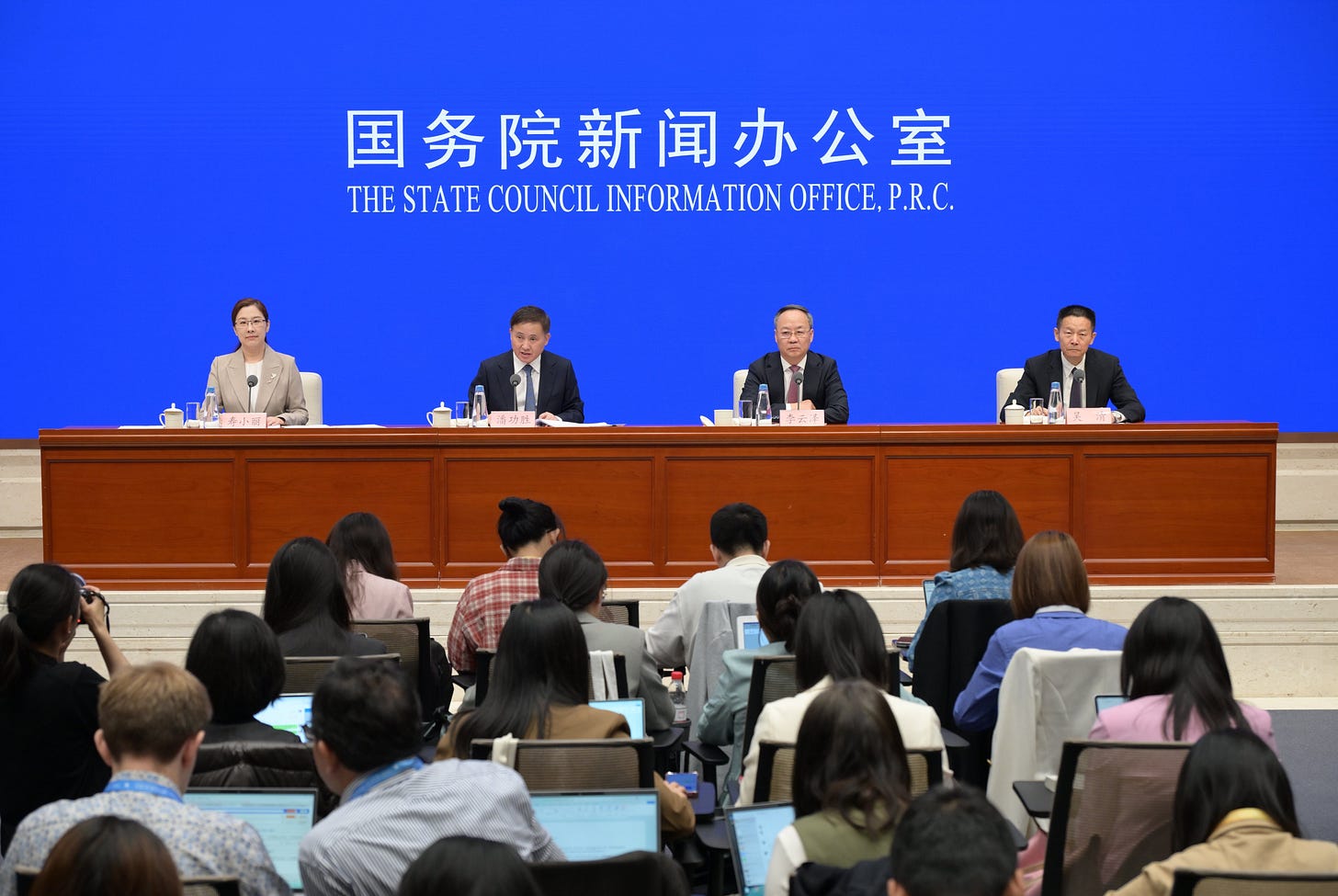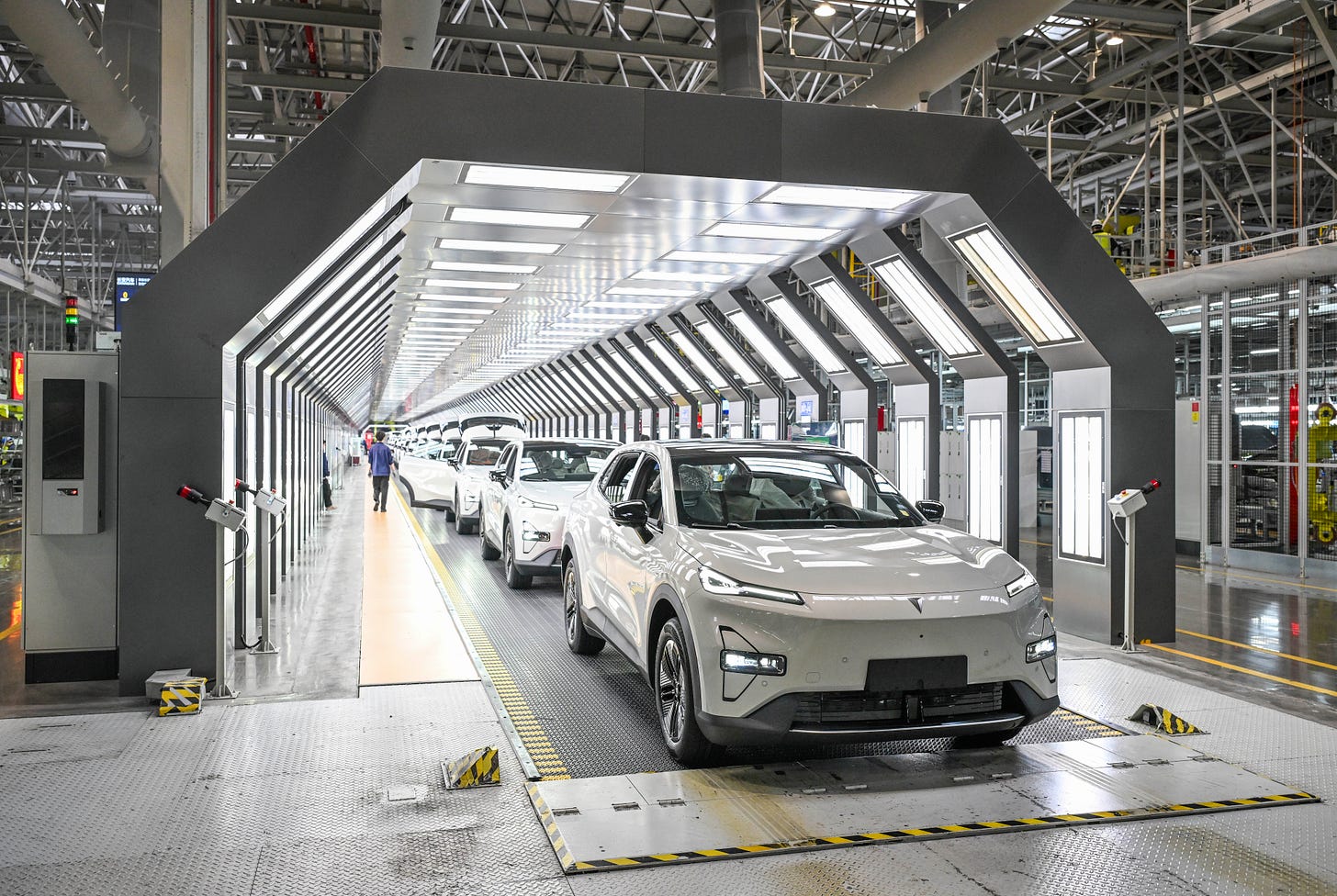Why revaluation of China's equities keeps drawing global attention?
China beckons global investors again with firmer growth, clearer policy, and accelerating innovation.
In recent weeks, global financial institutions such as Goldman Sachs, UBS, and Nomura have publicly expressed optimism about Chinese equities.
Goldman, for example, recently raised its 12-month targets for the MSCI China Index and the CSI 300 Index to 84 and 4600, respectively, implying 11% and 17% potential upside, while maintaining an overweight rating. Nomura also upgraded its China equity call to "tactical overweight," projecting that the recent rally is likely to continue.
At the 28th UBS Asian Investment Conference held earlier this month, Tommie Fang, Head of China Capital Markets of UBS Investment Bank, noted a rising appetite among international investors to engage more deeply with Chinese assets, driven by improving liquidity, clearer policy signals, and the growing appeal of innovation-led sectors like AI and advanced manufacturing.
This briefing explores what is driving this renewed attention, from upgraded macro forecasts and reform signals to a reshaped narrative around innovation and long-term opportunity.
UPGRADED MACRO FORECASTS SET TONE FOR RECOVERY
Global financial institutions are increasingly bullish on China's economic outlook. In response to the steady rollout of supportive macro policies and meaningful progress in China-U.S. trade talks, several major banks have revised up their GDP growth forecasts for China in 2025.
Goldman raised its projection by 0.6 percentage points, Morgan Stanley by 0.3 points, JPMorgan by 0.7 points, and Nomura by 0.5 points.
Behind this brighter outlook lies a confluence of supportive drivers: pro-growth policy signals, recovering consumer activity, and sustained investment, particularly in advanced manufacturing and innovation.
China has rolled out a series of fiscal and monetary tools to stabilize momentum and stimulate domestic demand. These include:
1.3 trillion yuan in ultra-long special treasury bonds, up from 1 trillion yuan in 2024;
4.4 trillion yuan in local government special-purpose bonds for public service upgrades and infrastructure;
A 0.5 percentage points cut to the reserve requirement ratio, effective May 15, is expected to release over 1 trillion yuan in long-term liquidity.
These efforts are complemented by consumer stimulus measures, such as trade-in subsidies for cars and home appliances.
According to Standard Chartered's report released on May 21, China's retail sales of durable goods in April received a notable boost from the trade-in policy, while infrastructure and manufacturing investment maintained steady growth -- demonstrating the effectiveness of bond-funded support.
Market resilience is also becoming more evident. As Fang noted, China's stock market has shown more strength:
“Since last September, policy intensity has increased, and A-shares have demonstrated resilience. Non-financial earnings rose notably in Q1, and profits are expected to improve steadily each quarter this year, especially in AI, high-end manufacturing, and new consumption sectors. In a global context, China's equity market has gained strategic relevance.“
On the external front, a de-escalation in China-U.S. trade tensions, including pauses or reductions in tariffs, has helped improve market sentiment.
Equity turnover and liquidity have rebounded, with institutional and retail investors gradually returning. According to Liu Mingdi, Chief Asia & China Equity Strategist at JP Morgan Securities Asia, the MSCI China Index beat forecasts in 2024, with EPS growth of 16% versus the expected 14%, driven by strong performances in the internet and healthcare sectors.
In recent months, top executives from global financial institutions -- including those from JPMorgan, Citigroup, and Carlyle Group -- have visited China, expressing strong confidence in its economic outlook and reaffirming their long-term commitment to the Chinese market.
"China's equity market has found its bottom in 2024. We believe 2025 will continue the recovery trend," Liu remarked.
POLICY-LED OPENNESS, STABILITY RESHAPES INVESTMENT FLOWS
China is actively making its capital markets more accessible and attractive to lure investors, with reforms aimed at attracting stable, long-duration capital, including pensions, insurers, and global funds with long investment horizons.
In late 2024, new regulatory measures took effect to facilitate overseas participation in A-shares. Authorities lowered shareholding thresholds, shortened lock-up periods, added tender offers as an extra option to make strategic investments, and broadened access channels for overseas institutions.
Reforms go beyond openness, as policy signals increasingly emphasize market stability, long-termism, and strategic allocation.
In April, state-backed funds, often referred to as the "national team," increased their holdings in exchange-traded funds (ETFs) to help steady market sentiment. Domestic institutional investors are also being guided to shift toward equities. China's pension and insurance funds have increased their equity allocations.
On the regulatory front, the China Securities Regulatory Commission (CSRC) issued an action plan on May 7 to promote the high-quality development of public funds, aiming to optimize fund operations, strengthen the link between manager compensation and investor returns, and expand equity investment across the sector.
Just days later, the CSRC revised rules on major asset restructurings, reinforcing the capital market's role in enabling industrial upgrades and mergers and acquisitions.
Since a key leadership meeting in September 2024 that reaffirmed China's commitment to invigorate the capital market, foreign holdings in Shenzhen-listed strategic emerging industry stocks have surged by 40%, with trading volumes up 90%.
These flows are a sign of renewed institutional confidence, supported not only by market fundamentals, but also by a clearer direction.
Monetary authorities are also playing a supporting role by maintaining ample market liquidity through a combination of targeted interest rate adjustments and reserve ratio cuts. These moves are designed to ensure a stable funding environment for long-term investment and real-economy financing.
INNOVATION REPOSITIONS CHINA IN GLOBAL VALUE CHAINS
Perhaps the most exciting driver of China's revaluation story lies in its next-generation industries -- the new quality productive forces of an innovation-led economy.
As China shifts from traditional manufacturing to high-tech industries like AI, robotics, and green energy, it is emerging not just as a global factory but as a hub for innovation and a launchpad for next-generation tech leaders.
This transformation is backed by strong R&D investment. In 2024, listed Chinese industrial firms spent over 1.6 trillion yuan on R&D, with more than 800 companies reporting R&D intensity above 10 percent.
According to the 2024 Global Innovation Index, China led the world with 26 of the top 100 global science and technology clusters, ranking first globally for the second consecutive year.
Morgan Stanley's chief China economist Xing Ziqiang described the shift as a "phoenix-like rebirth" of China's industrial chain -- especially in AI, where China may be the only country capable of building a fully integrated ecosystem.
"China's breakthroughs in AI this year have underscored its integrated innovation ecosystem, built on infrastructure, data, talent, and energy," Xing said, noting AI's potential to boost productivity and raise China's long-term growth potential.
As Wu Qing, head of China's top securities regulator, recently noted, the "technology-driven narrative" in the A-share market is becoming more coherent, with stronger clustering effects and deeper integration between scientific and industrial innovation.
New policy initiatives are reinforcing this trend. A recent policy package jointly issued by seven departments, including the Ministry of Science and Technology, laid out a blueprint for building a robust tech-finance system. Measures include enhanced IPO and M&A support for qualified tech firms, counter-cyclical issuance mechanisms, and stronger financial backing for breakthrough technologies -- all aimed at ensuring capital markets serve as an engine for China's innovation strategy.
As CICC chief economist Huang Wentao observed, China's progress in innovation and industrial upgrading is shifting global perceptions of its competitiveness, growth potential, and asset valuations. With policies now focused on stimulating domestic demand, investing in talent, and supporting strategic sectors, investor confidence is steadily gaining ground.
By Joyce Gao









